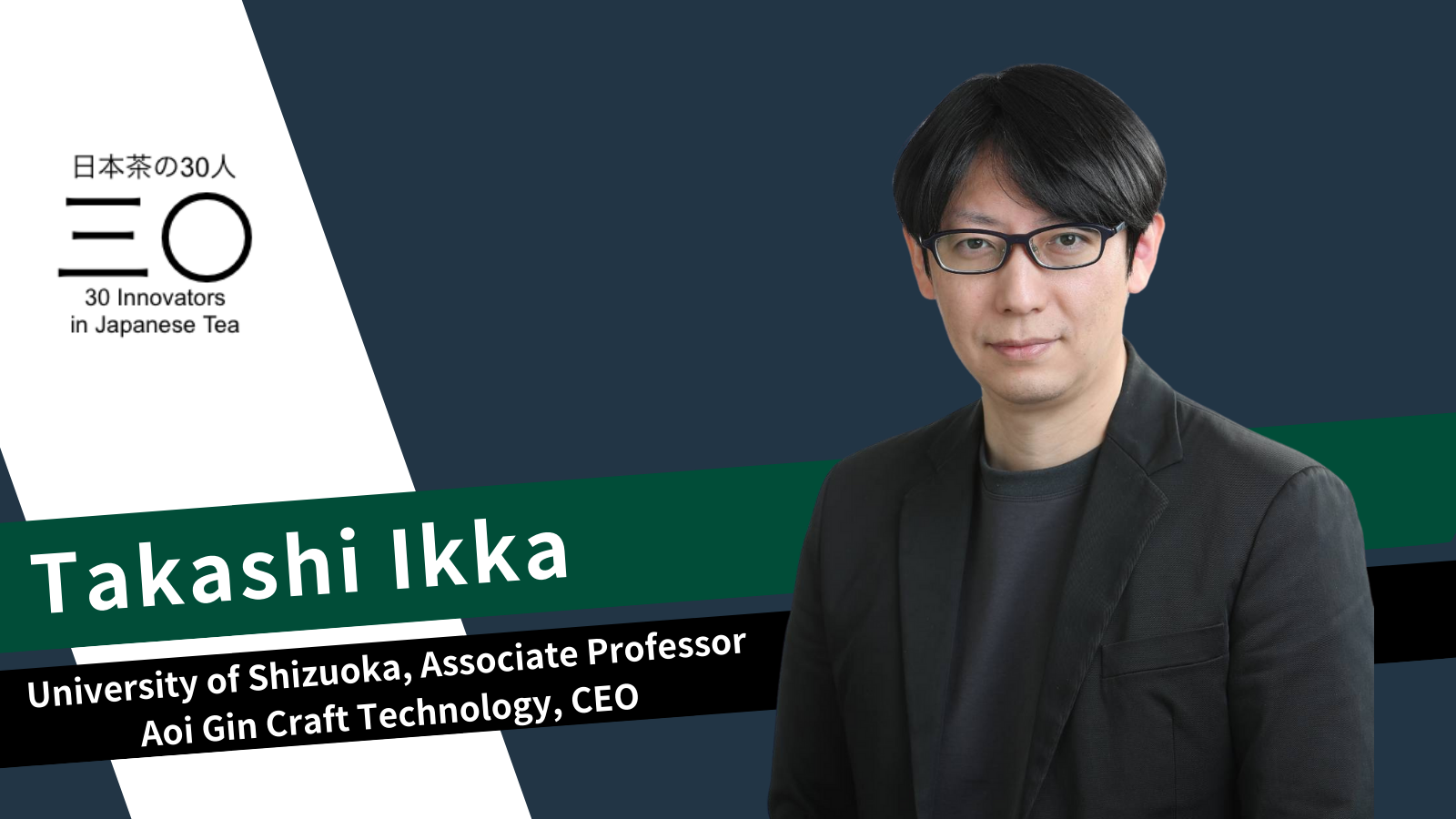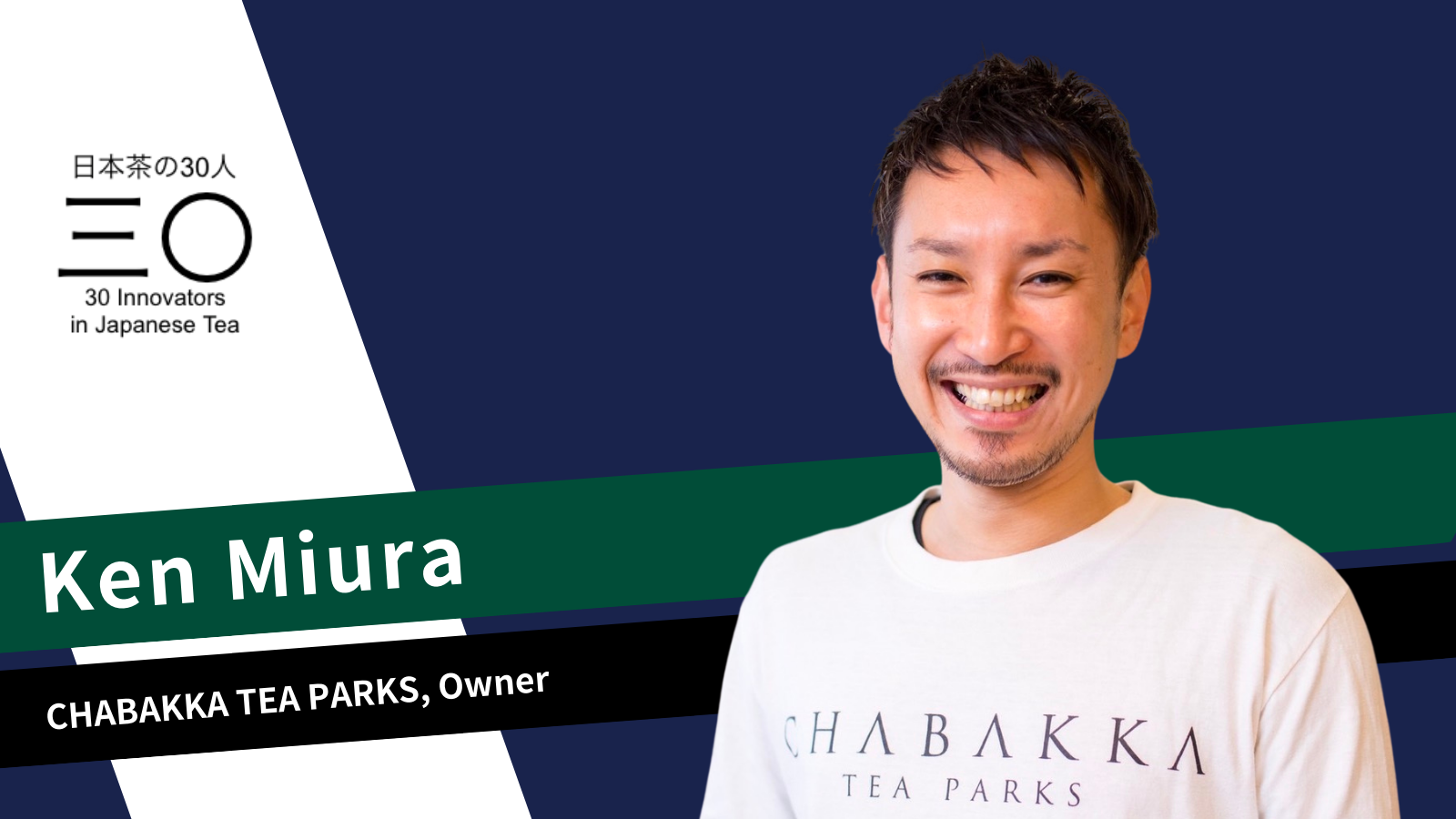Introduction
30 Japanese Tea Innovators is a project to highlight innovators, who are creating the future of Japanese tea.
In the world of Japanese tea, which is faced with numerous issues such as an aging population and declining consumption, increasing demand is a pressing issue. In this context, we are introducing 30 innovative initiatives to expand the possibilities of Japanese tea.
Table of Contents
Japanese Tea Situation and the 30 Innovators
Tea was brought to Japan more than 800 years ago, and has become such an integral part of daily lives that it is often taken for granted, just like water and air.
Furthermore, the situation surrounding tea continues to change, with the emergence of bottled tea in the 1990s and the global popularity of matcha in the 2000s.
However, due to various factors such as globalization and diversification of lifestyles, tea consumption has continued to decline over the past 40 years. In tea producing regions, an increasing number of tea fields are being abandoned due to the decreasing number of producers, an aging population, a decline in the wholesale price for tea, and soaring prices for fuel and materials.
If this trend continues, we may face a future in which we will no longer be able to drink the tea we love.
In order to overcome this situation, various innovative initiatives are being undertaken throughout Japan. And there are signs of change. For this project – 30 Japanese Tea Innovators, we have selected 30 innovators from various innovative initiatives across the country, and are introducing their backgrounds and activities.
The Selection of 30 Japanese Tea Innovators
First of all, it may be a bit of an excuse to say this, but this is the first time this kind of project has been undertaken, and it took more than half a year to decide where and how to select the 30 innovative initiatives.
Currently, it is said that there are more than 25,000 tea-related businesses in Japan, both individuals and corporations. Initially, we tried to select innovative projects from among them. However, this approach was not adequate.
In some cases, innovation is born within an industry. Most, however, are born on the fringes of the industry, shifting the focus, creating new demand and expanding until they are finally hailed as innovative initiatives.
For example, the demand for matcha in food processing was created by matcha lattes and matcha sweets. These were innovations created in coffee shops and sweet stores, not within the tea industry itself. In other words, in order to find innovations that occur on the fringe, it is necessary to look beyond the fringe, to other industries.
Innovation also has a time axis and can be called change. For example, Eisai brought tea seeds back to Japan, Sen no Rikyu perfected the tea ceremony, and Baisao spread sencha to the common people. These were undoubtedly innovative at that time. But today, they are seen as tradition and history, not innovation. Even the aforementioned invention of bottled tea and matcha sweets now seem too far behind to be included here as one of the 30 initiatives. In other words, the innovations that will be discussed here are those that are about to create a buzz, and for innovations that have already created a major trend, it is already too late.
Furthermore, since no one can predict the future, it is possible that the occurrence will be temporary or that it will take some time to develop.

In order to find such innovations, we decided to search for candidates, taking into consideration the following four points:
- Improvement and expansion
- Tea & X
- Value and monetization
- Trends and business stages
Improvement and Expansion
Firstly, innovation has two main vectors, improvement and expansion.

These two vectors are actually intertwined. In reality, we are constantly improving while expanding, and expanding while improving, so it is difficult to separate them.
Improvement refers to raising the level through innovation, while expansion refers to broadening the base.

When a product or service becomes popular, competitors enter the market. When competition increases, a market is created, and when a market is created, reputation grows.
At a time when the market is expanding, the best strategy is to improve one’s reputation in the market. However, when the market is not expanding or is shrinking, market evaluation is nothing more than competition with other players, which can lead to a vicious cycle in which the market itself shrinks further.
In Japan, there are many cases in which we strive to improve things, as exemplified by flip phones and high-performance home appliances. This is also the case in traditional industries such as tea.
In contrast, expansion refers to expanding into new areas where there is no market or competition. However, if it is not accompanied by customer appreciation, it is merely self-satisfaction. Explanation also dilutes. Therefore, the innovator at the center of expansion needs to improve the concentration further, because if it is diluted, it will not spread any further.
In this case, improving is similar to aiming high at the center of the industry. However, innovators who are expanding are improving in order to expand, so their objectives are different from the beginning.
Simply put, competing (like winning or getting to the top) itself is not the objective. The goal is not to beat the competition, but to attract new customers, who have not seen it yet.
Based on these two vectors of Improvement and Expansion, in this edition of 30 Japanese Tea Innovators we introduce innovative initiatives that are expanding the world of tea to new areas.
Tea & X
And how do we envision the areas to which the two vectors of improvement and expansion apply? For this project, we used the Tea & X method.
Tea & X is a combination of tea and X, which is a different field. For this edition, we have selected the following 30 combinations of Tea & X.

This may sound like an excuse, but it is a truly new territory and innovation that cannot be expressed in just one word. For this reason, we are trying to describe a new field using the words above, but unfortunately just one word cannot accurately represent a different field (I hope readers will be able to understand this).
Value and Monetization
Many economic challenges arise when value is not fully monetized. This is the reason why there are calls for increasing demand in the tea industry.
When talking about value and monetization, a good example is Van Gogh and Picasso. How did these two artists monetize their value? It is a stark contrast.
Van Gogh left behind 2,000 works during his lifetime, but only one painting was sold while he was alive. The price was 400 francs (about 100,000 yen at current prices). He was poor all his life.
In contrast, Picasso left more than 150,000 works of art and was financially successful as an artist, amassing assets of more than 750 billion yen in his later years.
In the tea industry, where there are cries to increase demand, it can be said that the entire industry, from the production sites to the tea rooms, continues to be in a situation where its value is not fully monetized, just like the story of Van Gogh and Picasso. However, it is difficult in reality because even if the value of a product or service is ready to be monetized, it usually takes time and continuous improvement to achieve the desired results.
In the edition of the 30 Japanese Tea Innovators the extent to which the value of the tea can be monetized was also taken into consideration. However, monetization itself is not the most important evaluation point. The most important thing is that the value of 30 Japanese Tea Innovators will be a discovery and provide some inspiration to the reader. For this reason, we are also introducing innovations that are not necessarily in a position to monetize the value.
Trends and Business Stages
Related to the value and monetization mentioned in the previous section, trends and the business stage of the operator also have a large influence on why products and services are evaluated and the market expands.
When the entire innovation field of Tea & X rides the wave of a trend, competitors appear and a market is formed.

Matcha green tea sweets are a good example of a recent trend. Matcha has successfully adapted to the trend toward health-consciousness and the desire for new flavors other than chocolate or strawberry, resulting in a boom that has given a rise to a number of competitors and the formation of a global market.
Also, whether the business stage of the product or service operator will rise with the trend is a very important point from a business perspective. A good example is the PET tea bottle invented in 1990. Ito En invented and led the market for bottled tea, and more than 30 years later, Ito En is still No. 1 in the industry. This is a good example of an operator’s business stage rising with the market.
Cases like this can be considered a goal for innovators who are trying to innovate right now. However, in reality, it is rare for trends to match the innovator’s business stage so well. Innovations often do not become trends, and even if they do, it is extremely difficult for innovators to remain at the center of them.
In this edition of 30 Japanese tea Innovators we introduce innovative initiatives from the perspective of 30 Tea & X.
However, there are questions like “How close is innovation to becoming a trend?”, “At what stage of business is the innovator?” and “Can the value of their innovative products and services be monetized?”. I would also like to add that there are considerable differences.
Who Should Read It?
We hope that this edition of the 30 Japanese Tea Innovators will be read by those who will become future Japanese tea innovators, those who are not observers but are challengers themselves, and those who are on the fringe rather than the center. It is planned and structured in such a way that it will provide discoveries and inspirations for 30 Japanese tea innovators of the future.
We hope that people who are not yet involved in the tea industry, or even those who are involved but are not part of the mainstream yet, will be interested in it and will read on.
Although the introduction was a bit long, we hope you will continue to read the main story.






























